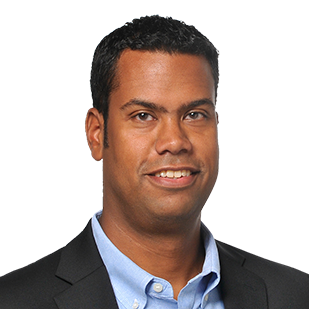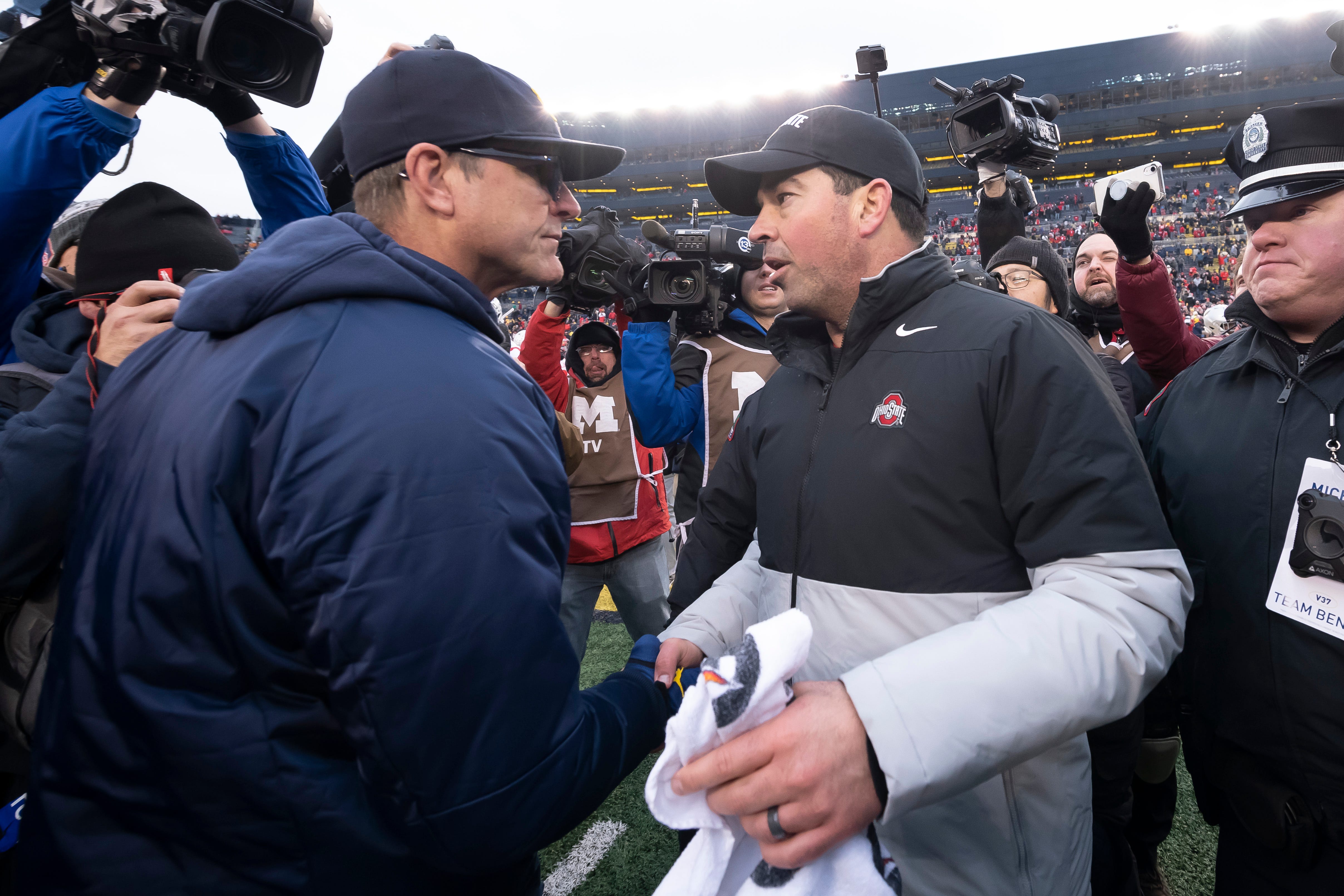Niyo: Coaches, players look for a Hail Mary to save fall college football
 John Niyo
John Niyo
College athletes finally began to find their collective voice this summer. In recent days, they’re finding it carries, too, though perhaps not as far as they hope.
Chances are, when the music stops, they’ll understand it wasn’t loud enough — or trained in the right harmony — to drown out all the noise created by a global pandemic, which was poised to claim another prominent victim this week: college football.
Still, when they started hitting the high notes, and the chorus kicked in, we heard something new, didn’t we? Something powerful, even?
The Big Ten appears to be set to make an official announcement Tuesday on canceling or postponing its 2020 conference season, another seismic event that would threaten the already-crumbling infrastructure of college athletics.
Other major conferences might follow suit. Leaders of the Pac-12 and Big 12 were scheduled to meet Tuesday. The ACC has a meeting on the docket for Wednesday, while the SEC — the red-blooded heartbeat of the sport, just ask them — was in discussions Monday, still sounding defiant.
“Can we play?” SEC commissioner Greg Sankey tweeted Monday, preaching patience while promising nothing. “I don’t know. We haven’t stopped trying.”
They haven’t, and they won’t. And frankly, they shouldn’t just yet, even if others have — the Mountain West on Monday joined the Mid-American Conference in postponing fall sports — and the fate of football this fall seems unavoidable.
Try as they might — and scores of players and coaches did just that with a last-ditch media campaign Monday — the Big Ten was prepared to pull the plug after a tumultuous weekend. And what comes next after the Big Ten's anticipated big chill is anyone’s guess at this point, which partly explains all the angst and anger beginning to spill out as college sports face a moment of reckoning.
Players and their families want answers, but administrators don’t have many, or any. Same goes for all the other various stakeholders in the sport, which is one reason why waiting a bit longer — and fleshing out the contingency plans — wouldn't hurt.
High cost
The only real certainty right now is that the financial hit from a lost season could be crippling, a point Michigan State athletic director Bill Beekman made to the Lansing Economic Club on Monday, telling a virtual luncheon crowd, “if there is no football, there is a loss of $80-85 million in direct revenue” to MSU’s program.
Michigan AD Warde Manuel sounded a similar alarm in a letter to football season ticket-holders last week, writing, “as a direct result of COVID-19, we budgeted $61 million less in revenues this year, which could easily double if the decision is made not to play any sports.”
But this decision — to play or not to say, that is the question — also will double as a proxy vote on another front, given the politically charged COVID-19 blame game that’s already well past kickoff in this country. That much was all but guaranteed even before President Donald Trump took to Twitter and amplified the sentiments of Clemson’s star quarterback, Trevor Lawrence, one of the high-profile college players who’d turned to social media to push for the season to be played.
Lawrence and others, including Michigan’s Hunter Reynolds, who’d helped spearhead a players’ rights movement in the Big Ten this summer, held a virtual meeting Sunday night — a "last Hail Mary," Lawrence's teammate, Darien Rencher, called it — in an attempt to synthesize what many understandably viewed as conflicting messages.
On the one hand, Pac-12 players were threatening a boycott if demands weren’t met on a variety of issues ranging from racial justice to economics to player safety, lumping COVID-19 protocols in with name, image and likeness (NIL) rights and guaranteed medical coverage. As Oregon safety Jevon Holland told Sports Illustrated, “I refuse to put my health at risk for somebody else’s benefit.”
Meanwhile, with the clock ticking down on the season, you also had players like Lawrence and Ohio State quarterback Justin Fields — presumptive Heisman Trophy favorites at powerhouse programs — arguing they would be at greater risk “if we don’t play.” That’s something many coaches have been saying for weeks now — without any real evidence — as teams began workouts on largely empty college campuses. And it’s something Alabama’s Nick Saban said again Monday, telling ESPN: “Look, players are a lot safer with us than they are running around at home.”
Of course, university presidents aren’t voting to send athletes home this week, or whenever they make that call. (As strawman arguments go, that one simply doesn’t have legs.) Instead, they’re simply acknowledging the reality they’re facing with the fall semester about to begin and no end in sight with this pandemic.
Amateur argument
So they’re punting, yes. And the vast majority of their football constituents would rather go for it, obviously. Michigan coach Jim Harbaugh made an impassioned argument for that — a rather compelling one, too — in a statement he released Monday morning.
“I’m not advocating for football this fall because of my passion or our players desire to play but because of the facts accumulated over the last eight weeks since our players returned to campus,” wrote Harbaugh, before citing his team’s test results as proof positive, if you will, that “this virus can be controlled and handled.”
And maybe it can in certain environments. (The NFL is banking on it, no doubt.) But while Michigan holds up its standards and protocols as an example — “If you are transparent and follow the rules, this is how it can be done,” Harbaugh noted — there are plenty of others across the college football landscape that administrators can point to as red flags, or worse.
Heck, Harbaugh essentially did that himself on a Big Ten coaches conference call earlier this month when he called out Ohio State for violating practice rules. And it's worth noting a rash of positive cases earlier this summer forced suspensions of workouts at fellow Big Ten schools Indiana, Rutgers and Michigan State, where a handful of players already had opted out of playing this season.
More: Vital questions as Big Ten heads toward postponing football season
More: Big Ten will postpone football season until spring; coaches plead to play
One of those players, Marcel Lewis, a redshirt freshman linebacker for the Spartans, tweeted Monday, “At the end of the day, it’s not up to us players to decide if we will have a season. If the season is cancelled how could you possibly be mad at the fact they are concerned about our health and well-being?”
And yet, here was Saban’s take Monday: “Our guys aren't going to catch it on the football field. They're going to catch it on campus. The argument then should probably be, 'We shouldn't be having school.' That's the argument. Why is it, 'We shouldn't be playing football?' Why has that become the argument?"
The short answer? Because that’s the argument college administrators and everyone else involved in the NCAA’s shell game has chosen to make for decades, using amateurism alternately as a sword and a shield while insisting football players are no different than any other students, never mind what the revenue streams say.
Problem is, now they’re facing an opponent — this novel coronavirus has no alma mater — that has found a way to turn that argument against them in ways they never imagined.
Maybe if the players were treated like the professional workforce they are — as employees, not “student-athletes,” the loaded term that even President Trump used Monday — there would’ve been a way to strike a bargain months ago to help mitigate some of the inherent risks here. One that would give players a larger say in the decisions being made on their behalf while easing the liability concerns for universities that make billions of dollars off their highly-specialized talents.
But instead, the leaders of college sports spent the summer doing what they always do, passing the buck and protecting their own.
NCAA president Mark Emmert made it clear early on this spring he’d abdicated any responsibility when it came to big-time college football, all but ensuring the kind of tribalism we’re seeing now, with conferences splintering and coaches flailing. (At his Monday press conference, Nebraska's Scott Frost sounded ready to have his Cornhuskers jump back to the Big 12, if necessary.) And rather than accepting defeat on the NIL issue, as the courts say they should, the Power 5 and the NCAA turned to Congress to help them restrict players’ rights and polish their antitrust armor.
Yet now they want everyone to sing "Kumbaya" and pretend they’re all on the same side here? Sorry, it doesn’t work that way. Or it hasn't, at least, until desperation set in. And because of that, neither will football as we knew it this fall, no matter how hard they all try to hit that last note.